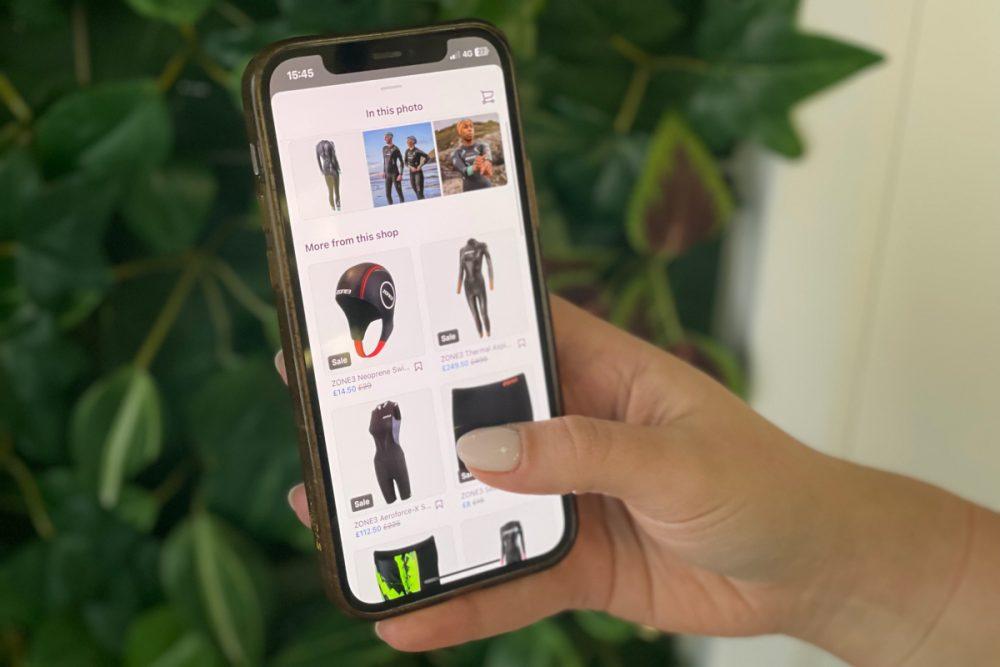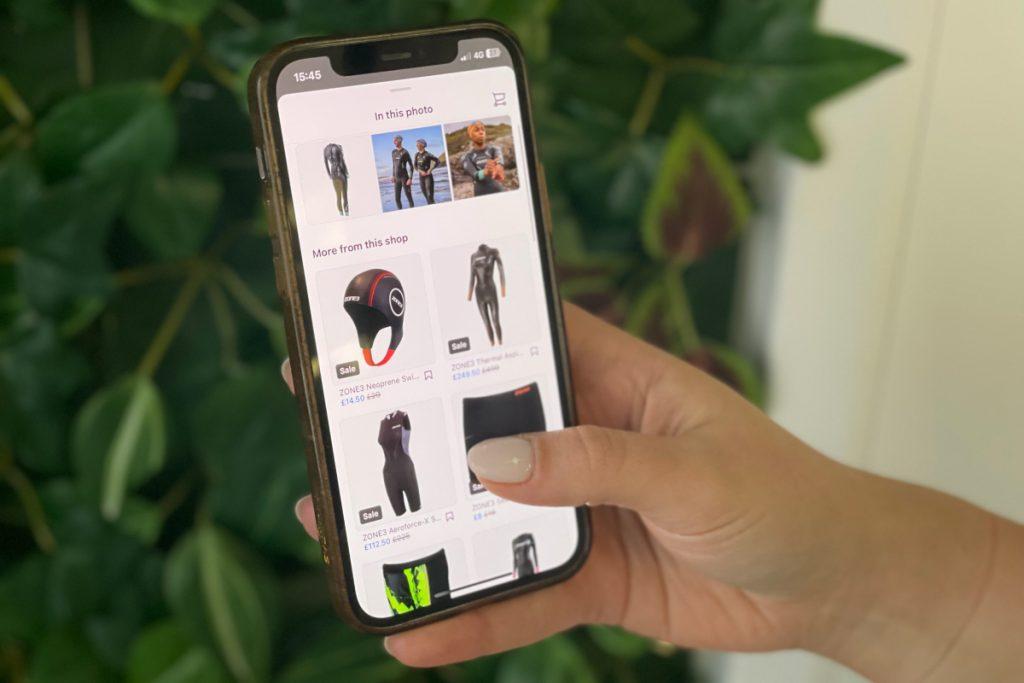In 2024, several key trends are set to reshape the ecommerce landscape, driving innovation and transforming the online shopping experience.
From mobile commerce to sustainable shopping practices, these trends offer valuable insights into the future of retail. Let’s explore some of the most influential trends shaping ecommerce in 2024 and beyond!
1. Mobile Commerce
When it comes to online shopping, a staggering 75% of consumers prefer browsing from mobile devices over desktops and iPads or tablets. Therefore, mobile-first and thumb-friendly ecommerce websites are a non-negotiable when it comes to creating success for your business. Advancements in one-click payments and facial recognition are simplifying and speeding up mobile purchases and once again, encouraging consumers to make purchases from their mobile devices. In the US alone, mobile commerce is set to account for 44.6% of retail ecommerce sales. As a result, ecommerce managers and business owners should prioritise mobile-first UX if they want to succeed in this competitive space.
2. Voice & Visual Search
In 2024, the significance of voice and visual search in ecommerce is set to soar thanks to advancements in AI technology. These innovative search capabilities are transforming the way customers interact with online stores, offering enhanced convenience and efficiency. Visual search, forecasted to exceed a market value of $32 million by 2028, has captured the interest of younger generations, particularly millennials and Gen Z. Despite this, only a small fraction of brands have implemented this feature, presenting a valuable opportunity for ecommerce businesses to differentiate themselves. ASOS’ Style Match feature is a prime example of how visual search can revolutionise the shopping experience, enabling users to find similar products by uploading images.
Meanwhile, voice search has emerged as a game-changer, allowing consumers to multitask and streamline their online shopping journeys. With nearly half of online shoppers utilising voice commands for purchases, it’s clear that voice search is here to stay. Optimising ecommerce stores for voice search entails securing top rankings on search engines like Google and refining keyword strategies to align with natural language queries.
3. Subscription Commerce
The subscription model has emerged as a dominant trend in ecommerce, offering a convenient solution for recurring purchases. With a staggering 71% compound annual growth rate, the subscription market is projected to exceed $2 trillion by 2028. From streaming services to meal kits like HelloFresh, various products are now available via subscription plans. HelloFresh alone boasts over seven million global customers with its customizable offerings.
Despite its popularity, subscription businesses face challenges like churn rate. To mitigate this, businesses can offer special incentives such as free delivery and exclusive access to products. Effective communication, including updates on deliveries, is crucial for building and maintaining customer trust in subscription services.
4. Personalised Experiences & CRM
CRM is crucial for ecommerce success, as it helps manage customer interactions effectively. With 92% of customers likely to leave after a few negative experiences, a robust CRM strategy is essential in 2024! Loyalty programs play a vital role in customer retention, with 75% of customers choosing companies offering rewards over those who don’t. Investing in comprehensive CRM tools like HubSpot CRM, you’ll position your brand ready for ecommerce growth. These tools offer features like email marketing and social integration to enhance customer engagement, increase retention and take your business to new heights.
5. Hybrid Commerce (ROPO & BOPIS)
The future of ecommerce is blending online and physical experiences, known as “phygital.” This approach, often called hybrid commerce or omnichannel selling, seamlessly integrates multiple platforms for a cohesive customer journey. Implementing click-and-collect, also known as buy online, pick up in-store (BOPIS), is a simple way to embrace omnichannel selling. Customers can shop online and collect purchases in-store, a trend projected to exceed $154 billion by 2025.
Additionally, businesses can leverage research online, purchase offline (ROPO) behaviour, where customers check products online before buying in-store, particularly for ensuring product compatibility. Consistency across online and offline channels is key, with companies employing omnichannel strategies experiencing a 494% higher order rate.
6. Social Commerce
Social media has become a dominant force in retail sales, particularly in mobile shopping. According to a recent study by HubSpot, a staggering 47% of social media users would purchase a product directly from an app such as Instagram or TikTok! With mobile devices driving 80% of social media traffic and 79% of smartphone users making purchases via mobile, social media commerce is projected to triple by 2025, hitting $1.2 trillion.
Built-in ecommerce features on TikTok, Instagram, Facebook and Pinterest facilitate targeted campaigns for businesses and should be embraced to drive sales and boost brand awareness. Leveraging influencer marketing and live shopping further boosts sales, with influencer-generated content driving high engagement and 80% of consumers making purchases based on influencer recommendations. Platforms like Net-A-Porter effectively integrate influencer marketing, providing interactive experiences such as “Shop the Look” links. Live shopping is also emerging as a powerful trend, estimated to reach $55 billion by 2026, the trend promises to reshape ecommerce by fostering real-time interactions and building customer trust through unedited live videos.
7. Marketing Automation
In 2024, marketing automation emerges as a pivotal trend reshaping the ecommerce landscape. Powered by machine learning, it offers businesses a dynamic toolset to automate marketing tasks, from ad campaigns to personalised email outreach. By harnessing customer data, marketing automation crafts tailored messages for every stage of the buyer’s journey, fostering deeper engagement and driving higher conversion rates.
As ecommerce continues to evolve, marketers are increasingly prioritising automation to streamline workflows and enhance efficiency. With over 40% of marketers planning to integrate automation into their email marketing strategies, the focus is on reducing cart abandonment rates and optimising customer interactions. Through targeted emails and incentives like free shipping coupons, businesses aim to incentivise purchases and enhance overall sales performance. As tools like Mailchimp and ActiveCampaign become commonplace, marketing automation stands as a cornerstone trend driving ecommerce success in 2024 and beyond.
8. Sustainable Shopping
Sustainability takes centre stage in 2024 as consumers increasingly prioritise eco-conscious options and demand authentic commitments from businesses. This trend reflects a growing awareness of climate change impacts, driving consumers to seek out sustainable goods and hold companies accountable for their environmental practices. However amidst this shift, scepticism towards “greenwashing” is on the rise, with a worrying 60% of U.S. consumers questioning the authenticity of companies’ sustainability claims. To meet evolving consumer expectations and build trust, ecommerce companies must demonstrate tangible progress towards sustainability goals and adapt quickly to changing circumstances. Authenticity is key, especially for younger consumers who actively seek out brands that align with their values and are quick to discern insincerity. As sustainability continues to gain momentum, ecommerce businesses must prioritise genuine and impactful sustainability initiatives to remain competitive and resonate with environmentally-conscious consumers.
9. Extended Reality
Extended reality encapsulates augmented reality (AR) and virtual reality (VR) and both of these innovative tech developments are set to make an impact in the world of ecommerce in 2024. Online shoppers often struggle with envisioning how products will fit into their lives, but augmented and virtual retail experiences have revolutionised this issue. Through AR and VR technology, shoppers can virtually “try on” items like clothes and makeup using their smartphones. Additionally, they can use AR to visualise furniture and appliances in their spaces, as seen with furniture giant IKEA and flooring retailer Factory Direct Flooring. VR showrooms, such as Audi’s Oculus experience, enable shoppers to interact with products before purchasing. AR and VR e-commerce alleviate customers’ concerns about online shopping by providing immersive experiences that encourage them to commit to a purchase.
10. Product Videos
In 2024 and beyond, product videos will become more and more commonplace as ecommerce brands battle it out to beat the competition and stand out from the crowd. Product videos will become imperative to driving success for ecommerce brands as consumers are becoming more discerning when placing online orders and showcasing the quality of your products could be the key to driving sales.
By prioritising mobile-first design, implementing extended reality solutions, leveraging social commerce platforms and adopting marketing automation tools, ecommerce businesses can enhance customer engagement, drive sales and build lasting relationships with consumers. As the ecommerce industry continues to evolve, staying up to date with the latest trends and remaining adaptable is key to success!
Need a helping hand with your ecommerce website? Don’t hesitate to get in touch!













